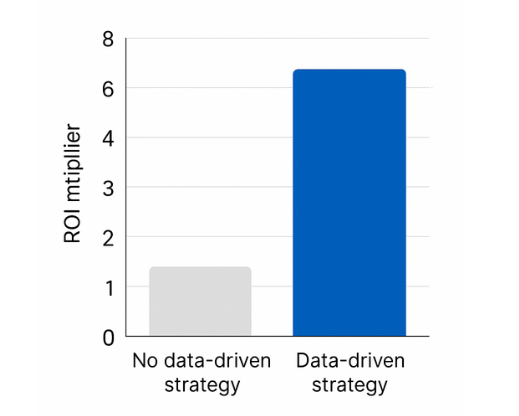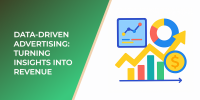Tracking and analytics are the foundation of effective advertising. Without measurable data, every decision is a guess. Analytics reveal what works, what doesn’t, and where your ad budget can generate the highest return.

Companies using data-driven marketing are six times more likely to be profitable year-over-year
According to recent studies, businesses that leverage data-driven marketing are six times more likely to achieve profitability year-over-year compared to those that don’t. Yet, 42% of marketers still admit they struggle with connecting performance data to actual ROI.
Key Metrics to Track in Advertising
Successful advertisers focus on the right metrics instead of drowning in data. Below are the key performance indicators (KPIs) that should always be monitored:
-
Click-Through Rate (CTR): Measures how engaging your ad copy and creative are. A higher CTR indicates strong audience interest.
-
Conversion Rate: The percentage of users who complete the desired action, such as signing up or making a purchase.
-
Cost Per Click (CPC) and Cost Per Acquisition (CPA): Help determine how efficiently your budget is being spent.
-
Return on Ad Spend (ROAS): A crucial metric showing how much revenue is generated for each dollar spent on advertising.
-
Frequency and Reach: Provide insight into how many people see your ad and how often.
Setting Up Effective Tracking Systems
A well-designed tracking system ensures that every step of the customer journey is measurable. Here are the best practices for setup:
-
Define Your Goals: Clarify whether your objective is awareness, engagement, or conversion.
-
Use Tracking Pixels and Tags: Implement tracking pixels on your website to collect behavioral data from ad interactions.
-
Segment Your Audiences: By tracking performance per audience segment, advertisers can identify which groups convert most effectively.
-
Integrate CRM and Ad Data: Combining campaign data with CRM insights allows for precise customer lifetime value (CLV) analysis.
Advanced Analytics Techniques

Data-driven approaches can deliver five to eight times the return on investment compared to non-data-driven strategies
Beyond surface-level metrics, advanced analytics can uncover hidden opportunities:
-
Attribution Modeling: Determines which touchpoints contribute most to conversions, helping to distribute credit more accurately.
-
A/B Testing: Running experiments to compare ad variations and improve performance.
-
Predictive Analytics: Uses machine learning models to forecast future results based on current campaign data.
Recent findings show that companies using predictive analytics experience a 21% higher marketing ROI on average compared to those relying solely on historical performance.
Turning Data into Action
Data becomes valuable only when it informs decisions. After collecting insights, advertisers should:
-
Refine creative elements that drive engagement.
-
Reallocate budgets toward top-performing segments.
-
Identify underperforming channels early to minimize losses.
Consistent tracking creates a feedback loop for continuous optimization.
Conclusion
Tracking and analytics are not just technical components—they are strategic tools that drive clarity, efficiency, and growth. Advertisers who build a strong analytical foundation can move beyond guesswork, achieve measurable outcomes, and sustain long-term performance improvements.
You may also like:

